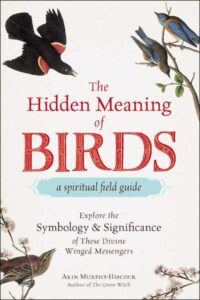 “There are more things in heaven and earth, Horatio / Than are dreamt of in your philosophy.”
“There are more things in heaven and earth, Horatio / Than are dreamt of in your philosophy.”
So spoke Hamlet the famous words challenging the perceived wisdom of what was, is, and can be known about the world. I found myself thinking about them upon the arrival of the copy of the forthcoming The Hidden Meaning of Birds – A Spiritual Field Guide by Arin Murphy-Hiscock. Focusing on the mythopoetic side of the birds so many of us spend so much of our time observing, this new guidebook expands the range of information presented about its included species far beyond what might be expected in a traditional field guide.
Admittedly, venturing as this new book does into the latter portion of the phrase “things seen and unseen” might strike some as perhaps a step too far in the study of natural history. But lest we forget, Aristotle himself notes in his Politics the practice of οἰωνίζομαι (ornithomancy – taking omens from observing the flights and vocalizations of birds), as does Xenophon in his Cyropaedia and Plutarch in his Life of Romulus. Humans have been watching birds for literally thousands of years and drawing everything from inspiration to foretellings of future events from doing so.
I happen to think that learning, and subsequently meditating a bit, on what manner of meanings have been interpreted from the watching, as well as subsequently imparted to the actions, of birds is effort well spent by anyone who would consider her or himself a well-rounded naturalist, and I very much look forward to delving into what Ms. Murphy-Hiscock has here written.
